About Seoul
A Capital City

Seoul, the capital city of the Republic of Korea, has been the center of the country for a long period of its own history from the prehistoric era to the present day. Seoul was the capital of an ancient dynasty Baekje, from 18 BC to 475 AD. After a long time had passed, Seoul has been serving again as the capital of the country since the Joseon Dynasty in 1394 until now for more than 600 years. From the Joseon Dynasty (1392) to the present time, Seoul has gone through many changes and developments as the capital of Korea. Based on its long history and tradition, Seoul has been preserving its unique, beautiful cultural heritage and it is evolving into a highly advanced city through spectacular economic growth.
An Intercultural City

The Republic of Korea is surrounded by seas on three sides, and Seoul is in the west of the country, with the Han River (Hangang) Stretching across it. A number of bridges are connecting the southern and northern parts of the city, boasting beautiful sceneries of their own. Also, Seoul, the heart of the nation and home to 10 million national and foreign residents, is a world-class city where contemporary lifestyle meets long-standing history. Seoul houses 266 cultural properties including five grand royal palaces, and is also a proud epicenter of the “Korean Wave” pop culture that is adored by many. Every corner of the city is packed with friendly residents and extraordinary restaurants, teeming with modern streetscapes and dashing natural landscapes. Seoul indeed is a place of boundless discoveries, where no two visits are alike.
Attractions of Seoul
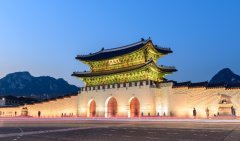
Gyeongbokgung Palace
(https://english.visitkorea.or.kr/enu/ATR/SI_EN_3_1_1_1.jsp?cid=264337)
Built in 1395, Gyeongbokgung Palace is also commonly referred to as the Northern Palace due to its location in the furthest north compared to the neighboring palaces of Changdeokgung (Eastern Palace) and Gyeonghuigung (Western Palace). Gyeongbokgung Palace is arguably the most beautiful and remains the largest of all five palaces. Managing to maintain many ancient features, Gyeongbokgung provides a unique “time travel” experience to its visitors as one of the greatest palaces in the history of Korea. Walking around the palace in a Korean traditional costume - Hanbok - has always been a favored activity for both locals and foreigners.
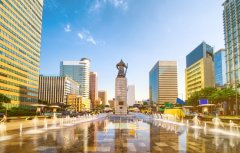
Gwanghwamun Gate
(https://english.visitkorea.or.kr/enu/ATR/SI_EN_3_1_1_1.jsp?cid=264329)
Being the main and largest gate of Gyeongbokgung, Gwanghwamun Gate has been a symbol of not only the palace itself but also that of Seoul and South Korea in general. Since its construction in the 14th century, the gate has gone through many changes and developments along the long history of Seoul. Thus, many artists take Gwanghwamun as their muse and created diversified works of art ranging from music to paintings.
Right in front of Gwanghwamun Gate is a public open space called Gwanghwamun Square, where laid the statue of King Sejong, the most emblematic ruler of the Joseon Dynasty as well as the creator of Hangeul, the official writing system in the Korean Peninsula. Visitors can learn more about ancient Korean items and history when strolling in the memorable underground museum “The Story of Sejong”.
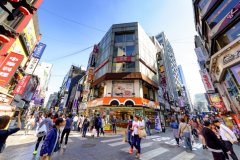
Myeong-dong
(https://english.visitkorea.or.kr/enu/ATR/SI_EN_3_1_1_1.jsp?cid=264312 )
Myeong-dong is one of the primary shopping districts in Seoul. Many brand-name shops and department stores line the streets and alleys. Unlike Namdaemun or Dongdaemun, many designer brands are sold in Myeong-dong. In addition, several major department stores have branches here.
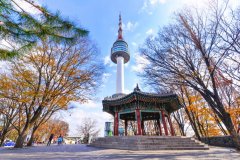
Namsan Seoul Tower
(https://english.visitkorea.or.kr/enu/ATR/SI_EN_3_1_1_1.jsp?cid=264550)
Namsan Seoul Tower was the first tower-type tourism spot in Korea. The top of the tower is at almost 480 meters above sea level, including Namsan Mountain (243m) and the tower’s own height (236.7m), making it one of the tallest towers in Asia. The tower was first established as a broadcasting tower to send out TV and radio signals in 1969. As of now, it has become one of the representative landmarks and multicultural venues in Seoul.
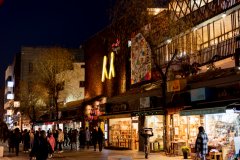
Insa-dong
(https://english.visitkorea.or.kr/enu/ATR/SI_EN_3_1_1_1.jsp?cid=264354)
Insa-dong, located in the heart of the city, is an important place where old but precious and traditional goods are on display. There is one main road in Insa-dong with alleys on each side. Within these alleys are galleries and traditional restaurants, teahouses, and cafes.
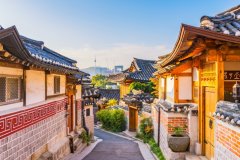
Bukchon Hanok Village
(https://hanok.seoul.go.kr/front/eng/index.do)
Surrounded by Gyeongbokgung Palace, Changdeokgung Palace and Jongmyo Shrine, Bukchon Hanok Village is home to hundreds of traditional houses, called hanok, that date back to the Joseon Dynasty. Today, many of these hanoks operate as cultural centers, guesthouses, restaurants, and tea houses, providing visitors with an opportunity to experience, learn and immerse themselves in traditional Korean culture.